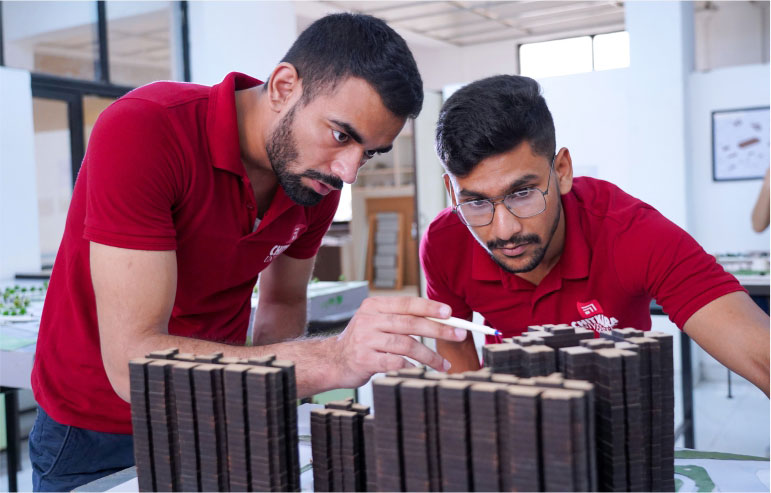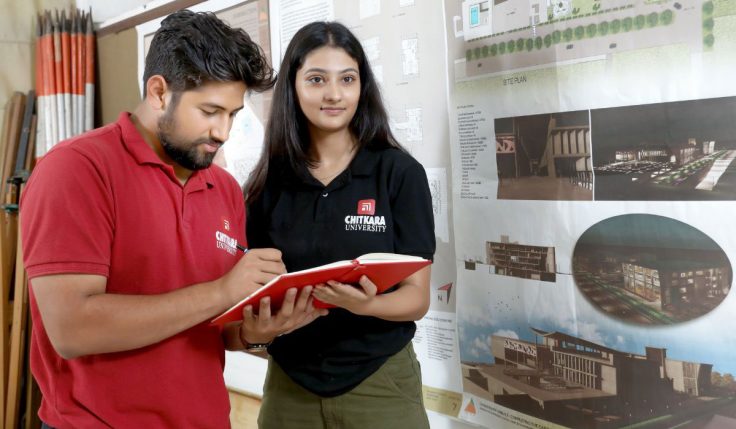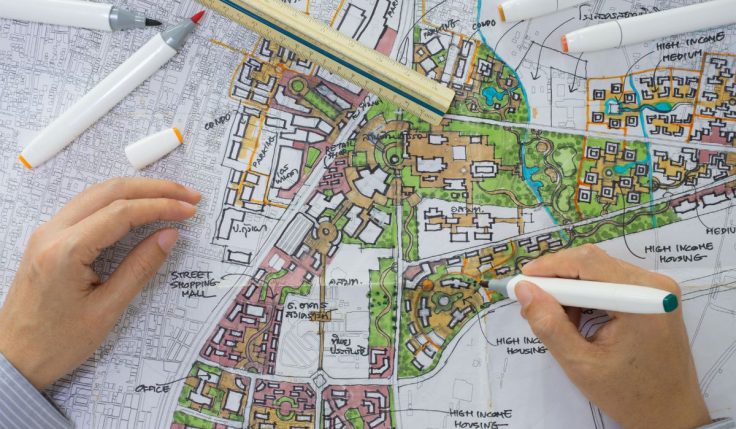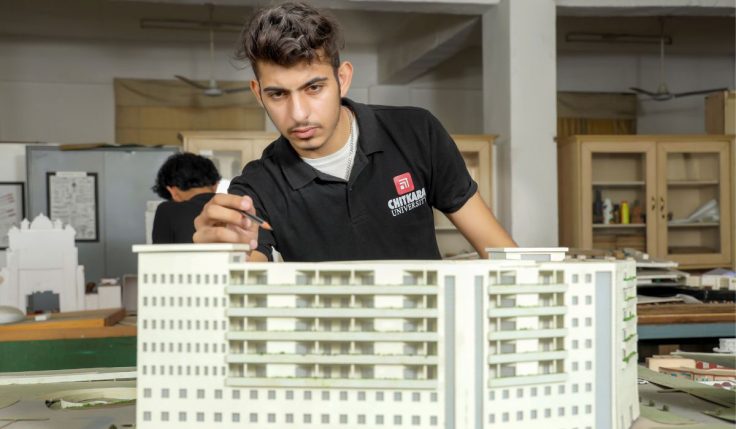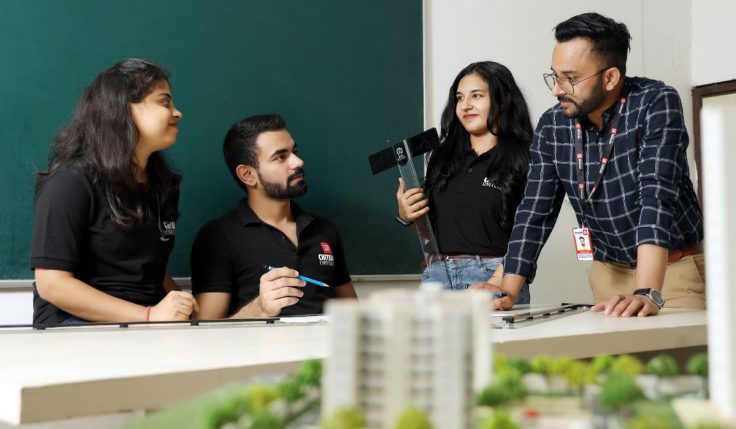One of the primary requirements of all living species is shelter. As humans evolved and moved out from caves to other types of dwellings using a combination of diverse materials, a concept of community developed. The lifestyle of societies of the past opens an interesting window on how ideas, locality, terrain and climate determined and shaped societies. A building can reveal much about the society that produced it.
Architecture becomes the stage and context for our lives, beyond merely providing protection from the vagaries of weather. It exists to create the physical environment in which people live and is about changing the way people relate to a place. One can feel empowered atop a tall building, or be absorbed in a maze of busy people in a grand plaza, or feel at peace inside a cathedral or joyous near a fountain.
The urban landscape is fast changing all over the world, and responsible architecture can create infinite possibilities in the way homes, cities and townships are developed taking into consideration the environment, and being sensitive to leaving a minimum carbon footprint.
Architectural trends shift, due to changes in cultural values and circumstances. The present pandemic influenced in transforming how people utilize their living spaces. It is a challenge to think differently and change habitats and the community. From the smallest residences and living spaces to complex megacities, set in a range of social and topographical settings, we see the opening of minds to new possibilities, studies on the role of ethical architecture, whilst taking into consideration relevant design, technical, theoretical and historical perspectives.
Current trends in architecture are now moving to open concept floor plans that are being used in corporate offices and small residences. Corporations have discovered that such open concept plans promote and boost productivity, morale, and inspire creativity.
Architects have to work on the physical, emotional, cultural, social…needs of the inhabitants, and not merely concentrate on the task of building. An emerging trend that we can view around us is a net-zero living space, which can be made ‘future-forward.’ This means that the building can incorporate future changes seamlessly. Architects have the freedom to use materials that are easily available, cost-effective and try to optimize the use of natural light, and the orientation of the building with regards to the climate.
Materials play an integral role in the ambience and look of a building. Geometric structures of concrete can make a building look futuristic, whilst wood structures bring together architecture and nature. The material is warm, pleasant and visually appealing. Open spaces, natural light, glass windows, add a delicate, timeless trend with splendid results.
An architect is trained to think logically, and read into the minds and lifestyles of the inhabitants and their families even before conceptualizing a design. The moods, habits, and leisure activities can play an important role in defining a living space.
With the advanced use of technology and innovation, new tools and solutions have been created. 3D printing has made a major impact on the construction process, and now it is possible to fabricate an entire house using this technology, more so in today’s context of rising labour costs. As artificial intelligence is gradually taking over, more discussions are happening on the pros and cons of such systems in building and construction.
The most sophisticated 3D printed earth habitat is TERA, a sustainable building that is supposed to be light years ahead of any known form of construction, built with NASA award-winning technologies. Other technologically advanced buildings worth looking at are The Edge by PLP architecture, described as the world’s greenest and most intelligent building. Taipei 101 Tower by C.Y.Lee & Partners, in Taiwan, has some of the most advanced disaster prevention systems in place, as the country is prone to severe typhoons. Interestingly, the trend of homes also veers towards sustainable living, where homeowners are opting to build using natural elements. This allows the architect to use his/her talents in blending the materials and design features to be in harmony with nature. With the scarcity of potable water, greywater systems are being introduced to reuse water, and solar panels are used for energy requirements, thereby saving on electricity.
Nearer home, Chandigarh is a wonderful example of sustainable urban planning by renowned Swiss-French architect Le Corbusier. The city is green, organised and pulsates with life. Le Corbusier’s use of ‘Brise-Soleil – an architectural feature of a building that reduces heat within a building by deflecting sunlight, is a great example of sustainable architecture. In an interview, BV Doshi, reflecting on Le Corbusier’s building had stated that Le Corbusier’s buildings are made of forms, light and space and fluidity, each a beautiful object. He went on to say that Le Corbusier’s buildings were isolated but full of richness, volume, light and space. Another famous architect of this region is Geoffery Bawa from Sri Lanka, who created the concept, which is globally accepted as ‘Tropical Modernism.’ His creations use materials from nature and blend gardens and water bodies into living spaces.
Climate change, the burning issue of today, has also shaped how urban spaces are conceptualised and planned, with a sustained attempt being made to incorporate trees around homes and office complexes, with the use of recycled materials, to bring nature into our living spaces. The use of mud, lime plaster, and compressed earth bricks give an earthy feeling to any living space. Going back to basics, the use of mud as construction material helps to build environmentally sustainable, economically viable and energy-efficient abodes. A prime example would be the Thannal Hand sculpted homes, by the Tiruvannamalai-based architect couple Biju Bhaskar and his wife Sindhu. All their structures are based on eco-friendly, indigenous knowledge systems. Benny Kuriakose, a celebrated Chennai-based architect, builds resorts and homes using locally sourced, eco-friendly materials like earth, stone and timber.
An architect plays a pivotal role in changing the landscape to suit the needs of society to live in harmony with nature. The space to design is an open canvas to work on, limited only by imagination. Modernistic technology, back-to-earth and sustainable living are a few trends in modern residential architecture that will define the next decade in architectural design.
Chitkara School Of Planning & Architecture is famous for its infrastructure which includes multiple state of the art design studios, multimedia laboratories, audio-visual laboratories, lecture halls, a one-of-a-kind materials museum, and a library brimming with all kinds of books and reference material. The program offers a perfect amalgamation of theory and practice. Through theoretical courses like history, design, and technology students get an in-depth understanding of the concepts of architecture and design. Through project-based coursework students learn how to put these theoretical concepts to work.
The construction industry is seeing exponential growth, and the demand for architects will also increase exponentially, as it has been projected that the demand for architects will be more than a million globally. The future landscape will be determined by forward-thinking architects, who will shape and mould the way societies interact and co-exist in harmony with nature.
